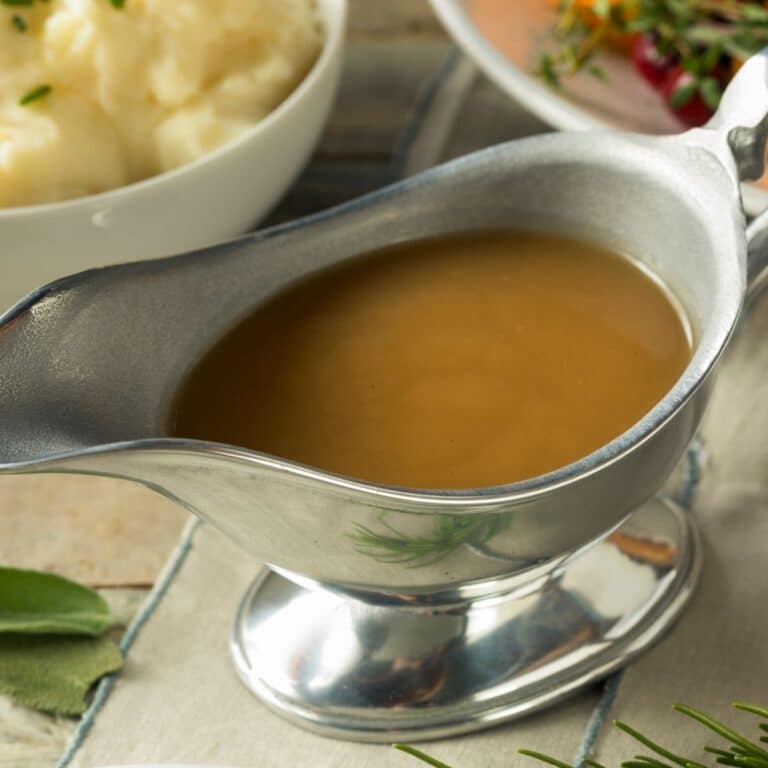Can Kidney Patients Eat Chocolate?
Do you have a loved one with chronic kidney disease (CKD)? Are you wondering if they can safely enjoy the occasional piece of chocolate?
People with CKD may be able to benefit from certain types of chocolate, but it's important to understand the potential risks and health benefits before indulging. In this article, we'll explore what type of chocolate is best for someone with CKD, how much they should eat, and what other sweets might make better alternatives.
We'll also discuss minerals that are important for people with CKD and suggest strategies for managing thirst.

By understanding the potential effects of dark chocolate consumption on inflammation, oxidative burden, cardiovascular protection, gut microbiota diversity, and more—you can enjoy a sweet treat while staying safe!
Jump to:
Overview of Chocolate
Chocolate, although rich in polyphenols with potential salutogenic effects, must be consumed in moderation by those with chronic kidney disease due to its high content of potassium and other minerals that can have negative impacts on advanced stages of the condition.
Nevertheless, chocolate can provide numerous beneficial effects for CKD patients when enjoyed responsibly.
Rich sources of cocoa are dark chocolate (at least 70-85% dark chocolate), which contains flavonoids, antioxidants, vitamins and minerals that may help protect against heart disease.
Eating dark chocolate has also been associated with lower blood pressure and blood sugar levels. Additionally, studies suggest that regular consumption of dark chocolate could reduce free radicals in the body which can lead to cancer and other diseases.
CKD patients should also be mindful of the sugar content in their chosen form of chocolate as this increases blood glucose levels which could cause complications if left unchecked.
Moreover, milk chocolate is higher in saturated fat compared to its darker counterpart so it's not recommended for people at risk for cholesterol-related issues.
Although some phosphorus and potassium are found in small amounts within cocoa beans themselves, these elements become more concentrated when mixed with other ingredients often used to make candy bars or chocolates such as nuts or dried fruit - both containing high amounts of phosphorus and potassium respectively.
Therefore it's important for CKD patients to check ingredient lists before eating any type of candy bar or sweet treats made from cocoa beans including muffins or cookies.
For More Recipes and Ideas --->> Get Your Free Meals and Recipes That Are Perfect for Pre-Dialysis Diets, Pre-Dialysis with Diabetes, or Dialysis Diets.
Potential Benefits
You may be able to enjoy some of the potential benefits that dark chocolate has to offer those with CKD. Studies suggest that dark chocolate (70-85% cacao) can attenuate inflammatory markers like TNF-α in patients on hemodialysis, as well as reduce oxidative stress and cardiovascular risks. Furthermore, there is evidence for its potential to maintain gut microbiota diversity.
| Potential Benefits | Ingredients/Compounds |
| Cardiovascular Protection | Polyphenolics |
| Maintenance of Gut Microbiota Diversity | Theobroma cacao L., Sacha Inchi (Plukenetia volubilis L.) Oil, Gamma-Aminobutyric Acid (GABA) enrichment |
| Reduction of Oxidative Burden | Flavonoids, Vitamins & Minerals |
| Attenuation of Inflammatory Markers | Garlic & Cinnamon |
Despite these promising benefits of cocoa, it is important to note that phosphorus, potassium or sodium content of chocolate products may be too high for those on a kidney-friendly diet.
Therefore it is recommended to check the nutrition label before consuming any type of candy or sweet treat. Moreover, people with diabetes and chronic kidney disease should follow their diabetic dialysis diet when eating candies such as hard candy or jelly beans.
Ultimately, guidance from your renal dietitian may help you learn which candies can be eaten every so often while still providing adequate nutrition tailored specifically for your individual needs.
Negative Effects
Although there are potential benefits of chocolate, there can also be detrimental effects to those with advanced stage kidney disease due to its high levels of potassium and other minerals. Here are four key points on the negative effects of chocolate:
- Potassium levels in dark chocolate can be too high for those with advanced stage kidney disease at 559 milligrams of potassium per 100 g.
- Milk chocolate is high in saturated fat, which could increase cholesterol levels.
- Chocolate should be eaten in moderation since it contains about 206 milligrams of phosphorus per 100 g.
Chocolate has no known negative effect on kidney function. However, it should still remain limited as part of a CKD diet. The high potassium and phosphorus content may still pose a risk to those with advanced stage kidney disease or those on dialysis treatments.
They cannot remove excess phosphorus and potassium from their blood effectively enough to maintain normal body functions and prevent symptoms. These symptoms include nausea, weakness, hardening of tissues, and heart failure.
They can occur when too much builds up in their system over time from eating certain foods like candy bars or hard candies.
Even sugar-free candies are not always an ideal choice for people with CKD since they tend to contain carbohydrates which increase blood glucose levels – so it's important to check labels carefully before indulging in sweets!

Additional Guidance
When you have chronic kidney disease (CKD), it's important to make wise choices when selecting food items that contain chocolate. Here are some tips to help you enjoy chocolate safely while managing your CKD:
- Read the nutrition labels: Pay close attention to the potassium and phosphorus content listed on the nutrition labels of chocolate products. Choose options with lower levels of these minerals.
- Opt for dark chocolate: Dark chocolate generally contains less potassium and phosphorus compared to milk chocolate or white chocolate. Choose varieties with at least 70-85% cacao dark chocolate content to minimize the amount of added sugars.
- Control portion sizes: Moderation is key. Limit your consumption of chocolate to small portions. Consider breaking larger chocolate bars into smaller pieces to help manage your portion sizes effectively.
- Choose sugar-free alternatives: Some chocolate products offer sugar-free or low-sugar options. These can be a good choice for individuals with CKD who also need to watch their sugar intake.
- Experiment with homemade treats: Consider making your own chocolate treats using kidney-friendly ingredients. You can control the ingredients and adjust the levels of potassium and phosphorus accordingly.
- Consult a dietitian: Work closely with a registered dietitian who specializes in kidney disease to create a personalized meal plan that incorporates safe amounts of chocolate. They can guide you in making suitable choices based on your specific nutritional needs and stage of CKD.
- Monitor your blood levels: Regularly monitor your blood levels of potassium and phosphorus to ensure they are within the target range. This will help you identify any potential issues and make adjustments to your diet as necessary.
Remember, while it is possible to include chocolate in a CKD diet, moderation and careful selection are crucial. It's always best to consult with your healthcare team and dietitian to determine the most appropriate approach for your specific condition.
Kidney Disease and Minerals
As CKD progresses, minerals such as phosphorus and potassium can become dangerously high, making it essential for those with the disease to monitor their intake closely.
People with kidney disease need to pay close attention to their mineral levels in order to maintain healthy functioning of their body. This means adjusting diet to reduce or eliminate certain minerals, supplementing with nutrient-rich foods when necessary, and even modifying lifestyle habits in order to improve health.
When it comes to chocolate consumption by people with kidney disease, it's important to take into consideration the high amounts of phosphorus and potassium that are present in this food item.
While dark chocolate may hold some health benefits due to its flavonoid content, people should be aware of the potential for a negative effect on mineral balance.
Candies containing a bit of dark chocolate or other limited ingredients can be eaten every so often – however, care must be taken when monitoring mineral intake.
It's also important for people with chronic kidney disease (CKD) or those on dialysis to limit or avoid candies that contain high amounts of phosphorus or sodium as well as candy bars like hard candy, jelly beans, gumdrops and chocolate which increase blood glucose levels.
Sugar-free candies may still have carbohydrates that could negatively affect blood sugar levels, so consulting a renal dietitian is recommended before including any candy into one's diet plan.
Ultimately having an individualized renal nutrition plan tailored specifically according to your needs is essential for proper management of kidney disease through dietary adjustments combined with lifestyle modifications. Take the time learn about reading nutrition facts labels with CKD.
Diabetes Considerations
If you have diabetes and chronic kidney disease, you may need to adjust your candy consumption habits in order to maintain balanced blood glucose levels.
Carbohydrates increase blood glucose, so it's important for those with both diabetes and CKD to understand how much carbohydrate they should have at each meal and snack.
While candies such as hard candy, jelly beans, gum drops, and chocolate are typically asked to be cut back on due to their content of carbohydrates and sugar, there are still some options that can be consumed in moderation.
Sugar-free candies might be a better option than regular ones since they contain lower amounts of simple sugars. Additionally, sucking on hard candy or sour candy can help control thirst without raising the blood sugar levels too much.
Including some candy in your diet can also help boost calorie intake if needed. A person's renal dietitian can best guide them towards which types of candy are okay for consumption every so often based on the individual's health condition.
Some people with chronic kidney disease and diabetes may benefit from not only limiting their sugar intake but also actively choosing foods that offer glycemic control benefits.
Like dark chocolate (70% cocoa) or Sacha Inchi (Plukenetia volubilis L.) oil that could potentially attenuate inflammatory markers like TNF-α while providing cardiovascular health protection as well as maintaining gut microbiota diversity.
It's important for people with diabetes and chronic kidney disease to know what type of sweets they should eat in order to maintain healthy blood sugar levels while also ensuring adequate caloric intake when necessary.
With guidance from a renal dietitian regarding which candies can be eaten every so often, individuals with both conditions will be able to enjoy their old favorites while monitoring their health closely by checking nutrition labels for sodium, phosphorus, potassium content before consuming any type of sweet treat.
Candy Types to Avoid
For patients with chronic kidney disease (CKD), there are certain types of candy that should be avoided due to their high potassium and phosphorus content, which can be detrimental to kidney function. Here are some types of candy that should be avoided:
Chocolate-covered nuts
While nuts on their own can be a healthy snack, the combination with chocolate can be problematic for CKD patients.
Both nuts and chocolate contain high levels of potassium, and the chocolate coating adds additional phosphorus. It's best to avoid candy with chocolate-covered nuts to manage potassium and phosphorus intake.
Caramels and toffees
Caramels and toffees are delicious treats, but they often contain high levels of phosphorus. Additionally, some varieties may also contain nuts, which further increases their potassium content. These candies should be avoided or consumed in very limited quantities by CKD patients.
Licorice
Licorice candy can be problematic for CKD patients due to its high potassium content. Potassium levels in licorice can vary depending on the brand and type, so it's important to check the nutrition labels or consult with a healthcare professional before consuming licorice.
Hard candies with artificial sweeteners: Some hard candies are sweetened with artificial sweeteners like sorbitol or mannitol. These sweeteners can have a laxative effect and may cause gastrointestinal issues for CKD patients. It's advisable to choose candies without artificial sweeteners or opt for candies sweetened with natural alternatives.
Candies with dried fruits: Some candies, such as fruit chews or fruit-flavored candies, contain dried fruits. Dried fruits are concentrated sources of potassium and phosphorus, which can be detrimental to individuals with CKD. It's best to avoid candies with dried fruits or consume them in very limited quantities.
Salty licorice or salted candies: Salty candies can contribute to increased fluid retention and higher blood pressure, which are concerns for CKD patients. Candies with added salt or licorice candies with high sodium content should be avoided.
It's important for individuals with CKD to carefully read nutrition labels and be aware of the potassium and phosphorus content in candies.
Consulting with a registered dietitian who specializes in kidney disease can provide valuable guidance in managing the diet and making informed choices regarding candy consumption.

Recommended Candy Types
For individuals with chronic kidney disease (CKD) or those on dialysis, selecting suitable kidney friendly candies can be challenging due to the need to manage potassium and phosphorus intake. However, there are still some candy types that can be enjoyed in moderation.
Here are some recommended candy options for individuals with CKD or on dialysis:
- Jelly beans: Jelly beans are generally lower in potassium and phosphorus compared to other candies. However, it is still important to consume them in moderation due to their sugar content.
- Mints and gum: Mints and gum are typically low in potassium and phosphorus, making them a safer option for individuals with CKD. Opt for sugar-free varieties to further manage sugar intake.
- Marshmallows: Marshmallows are usually low in potassium and phosphorus. They can be enjoyed on their own or used as a topping for desserts in limited quantities.
- Fruit-flavored candies without dried fruits: Fruit-flavored candies that do not contain dried fruits can be a better option for individuals with CKD. They are often lower in potassium and phosphorus compared to candies with dried fruits.
- Licorice without added salt: Licorice candies without added salt can be enjoyed in moderation. However, it's essential to check the nutrition labels and choose varieties with lower potassium content.
Remember, moderation is key when consuming candies, even those that are considered safer options for CKD patients.
It's important to monitor potassium and phosphorus levels and consult with a registered dietitian who specializes in kidney disease to ensure that the candy choices align with individual dietary needs and restrictions.
Sugar-free Candies
Sugar-free candies can offer several benefits for individuals with chronic kidney disease (CKD).
Here's an overview of how sugar-free candies can be a good option for CKD patients:
One of the primary advantages of sugar-free candies is their minimal impact on blood sugar levels. CKD patients often need to manage their blood sugar control, particularly if they have diabetes.
Sugar-free candies are sweetened with sugar substitutes like stevia, aspartame, or sucralose, which do not significantly raise blood sugar levels. This allows CKD patients to enjoy a sweet treat without compromising their diabetic control.
In addition to blood sugar control, sugar-free candies can help CKD patients reduce their overall sugar intake.
Regular candies can be high in sugar, contributing to increased calorie consumption and potential complications such as weight gain and cardiovascular issues.
By opting for sugar-free candies, CKD patients can satisfy their sweet tooth while managing their sugar intake more effectively.
Another benefit is that sugar-free candies often have lower levels of phosphorus and potassium compared to regular candies. For individuals with CKD, it is crucial to monitor their phosphorus and potassium intake due to impaired kidney function.
Regular candies may contain additives or ingredients that are high in phosphorus and potassium, which can be problematic. Sugar-free candies, on the other hand, tend to have reduced levels of these minerals, making them a safer choice for CKD patients.
Furthermore, sugar-free candies can contribute to better oral health in CKD patients. Dental problems, such as tooth decay and gum disease, are common in individuals with CKD. Regular candies with high sugar content can worsen these oral health issues.
Sugar-free candies, with their lower sugar content, can help reduce the risk of dental problems and support improved oral hygiene when combined with proper dental care practices.
While sugar-free candies offer advantages for CKD patients, moderation is still important. Some sugar substitutes used in these candies can have a laxative effect in large quantities, and it is essential to choose candies without other problematic ingredients, such as excessive sodium or artificial sweeteners that can cause gastrointestinal issues.
As always, consulting with a registered dietitian who specializes in kidney disease is essential to develop an individualized dietary plan that incorporates sugar-free candies appropriately while considering the specific nutritional needs and restrictions of CKD patients.
Thirst Management
For those with chronic kidney disease, especially patients on dialysis, it's important to manage thirst and stay hydrated without overloading on liquids. Candy can be a great option for those looking for an alternative to water as it provides flavor combinations and portion control.
Hard candy, sour candies, chocolate, and sugar-free candies are some of the sweets that people with chronic kidney disease or on dialysis can enjoy in limited amounts.
However, these treats should always be consumed with caution due to their potential risks such as high phosphorus levels in some types of candy.
It's important to read food labels carefully in order to make sure the candy is low in phosphorus and sodium, especially if you have diabetes or are already following a renal diet.
Sugar-free varieties tend to be lower in carbohydrates which makes them a good choice for people needing extra calories but who don't want too much sugar.
Also, sucking on hard candy or sour candies can help control thirst without drinking large amounts of liquid.
When deciding what type of candy is right for you, it's best to consult your renal dietitian first so they can provide personalized advice based on your health condition and dietary needs.
By understanding how much carbohydrate you should have at each meal and snack through proper guidance from your dietitian, you will be able to include some candies safely into your renal diet while still achieving optimal nutrition goals.
FAQs about Chocolate & CKD
The recommended daily amounts of chocolate for people with kidney disease can vary depending on individual circumstances.
It is important to consult with a registered dietitian who specializes in kidney disease to determine the appropriate guidelines. In general, portion control is crucial, and it is recommended to limit chocolate intake to a small amount, such as 1-2 small squares or a few chocolate chips.
Dark chocolate with at least 70% cocoa content is often preferred, but overall, moderation and individualized recommendations are key.
In moderate amounts, there can be potential benefits to eating chocolate for people with CKD. Dark chocolate, in particular, contains antioxidants that may offer cardiovascular benefits.
Additionally, it can provide a small mood boost and enjoyment. However, it's important to consider the high potassium and phosphorus content of chocolate and adhere to portion control.
Individuals with CKD should consult with a registered dietitian to determine the suitability of incorporating chocolate into their diet, ensuring it aligns with their specific nutritional needs, stage of kidney disease, and dietary restrictions.
There are specialized candies available for people with kidney disease that have reduced levels of potassium, phosphorus, and other minerals. These candies are formulated to meet the dietary restrictions and needs of individuals with kidney disease.
However, their availability may vary depending on the region and manufacturer. It is advisable to consult with a registered dietitian or healthcare professional specializing in kidney disease for information on specific brands or options that may be suitable.
They can provide guidance on identifying candies that align with dietary recommendations and help ensure they fit within the individual's overall meal plan and nutritional goals.
Yes, there are hidden ingredients in candies that people with kidney disease should be cautious about. Two particular substances to watch out for are high-fructose corn syrup (HFCS) and phosphate additives.
HFCS is a sweetener commonly found in processed foods, including candies, and it can contribute to increased sugar and calorie intake.
Phosphate additives, such as tricalcium phosphate or sodium phosphate, are often used in candies to enhance texture or preserve freshness.
These additives can significantly increase phosphorus levels in the bloodstream, which is problematic for individuals with kidney disease.
It's crucial to read ingredient labels carefully and choose candies that are free from HFCS and have lower levels of phosphate additives.
Consulting with a registered dietitian or healthcare professional can provide further guidance on identifying hidden ingredients and making informed choices to meet the specific dietary needs of individuals with kidney disease.
For patients with chronic kidney disease (CKD), there are kidney-friendly chocolate recipes that can be enjoyed in moderation. Here are a few ideas:
Chocolate Banana Ice Cream: Blend frozen bananas, unsweetened cocoa powder, and a low-potassium milk alternative until smooth.
Optionally, add a kidney-friendly sweetener like stevia or monk fruit for added sweetness. Freeze the mixture for a few hours until it reaches a chocolate ice cream-like consistency.
Chocolate Protein Balls: Combine low-potassium nut butter (such as almond or cashew butter), unsweetened cocoa powder, cocoa butter, rolled oats, and a kidney-friendly sweetener. Form the mixture into small balls and refrigerate until firm.
Chocolate-Covered Strawberries: Dip fresh strawberries in melted 3.5 oz dark chocolate bar (at least 70% cocoa). Let them cool and harden on a parchment-lined baking sheet.
Chocolate Rice Pudding: Cook low-potassium rice (such as white or jasmine rice) in a low-potassium milk alternative with a kidney-friendly sweetener and unsweetened cocoa powder. Stir until creamy and serve chilled.
Remember to consume these recipes in moderation, practice portion control, and consider your specific dietary restrictions.
It's always recommended to consult with a registered dietitian who can provide personalized guidance and ensure these recipes align with your nutritional needs and CKD management.
With Portion Control, Chocolate Can Be Great
Individuals with chronic kidney disease can have chocolate in moderation, especially certain types of chocolate, such as dark chocolate with at least 70% cocoa content, and with careful consideration of their specific nutritional needs. There are many benefits of a renal diet to consider.
Dark chocolate has potential benefits for CKD patients, including cardiovascular protection, maintenance of gut microbiota diversity, reduction of oxidative burden, and attenuation of inflammatory markers.
However, it's crucial to be mindful of the high potassium, phosphorus, and sugar content in chocolate, as these can negatively impact kidney function and blood glucose levels.
Reading nutrition labels, controlling portion sizes, opting for sugar-free alternatives, and consulting a renal dietitian are essential for safe intake of chocolate. Additionally, it's important to avoid certain candy types that are high in potassium and phosphorus and to choose candies that are low in these minerals.
Sugar-free candies can be a suitable option for individuals with CKD as they have minimal impact on blood sugar levels and often contain lower levels of phosphorus and potassium.
Overall, moderation, careful selection, and guidance from healthcare professionals are key to incorporating chocolate and candies into a kidney-friendly diet.













